Choosing the Best Meat Dicing Equipment
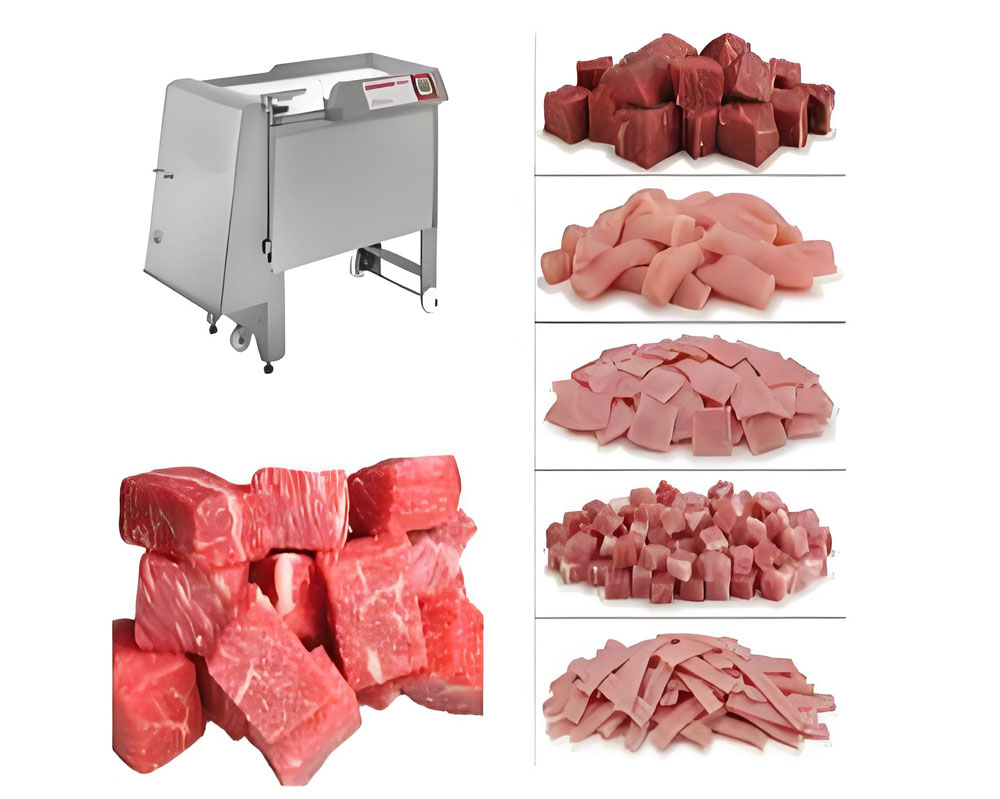
Understanding the Importance of Meat Dicing Equipment
In the food processing industry, precision, speed, and consistency are paramount. Meat dicing, a critical aspect of this industry, involves transforming meat into uniform, bite-sized cubes that can be further processed, packaged, or used in prepared meals. The equipment used in this process is not just about cutting meat; it’s about ensuring that each dice is consistent in size and shape, which directly impacts the final product’s quality, texture, and visual appeal.
The importance of meat dicing equipment cannot be overstated. Whether it's for small-scale butcher shops or large commercial operations, investing in high-quality dicing tools is essential to achieving operational efficiency, reducing waste, and meeting customer expectations. Proper meat dicing equipment minimizes manual labor, ensures safety, and speeds up production—factors that contribute to an overall more profitable operation.
Why Meat Dicing is Essential in Food Processing
The process of dicing meat serves several purposes in food production. From culinary consistency to texture enhancement, the shape and size of diced meat play a critical role in the product's final presentation and preparation. For example, precise dicing can ensure even cooking, making it easier to control cooking times and reduce the risk of undercooked or overcooked portions.
Moreover, dicing meat allows for uniform seasoning absorption, ensuring that every piece of meat is infused with the same flavor profile. For processed meats like sausages or burgers, consistent dice size helps achieve uniform texture, making the product more appealing to consumers. In large-scale food processing, consistent dicing is essential for standardizing products and meeting the rigorous demands of the market.
Overview of the Meat Dicing Process
Meat dicing begins with the preparation of the meat itself. It is typically chilled or partially frozen to make the cutting process more efficient and reduce the risk of the meat adhering to blades. The meat is then fed into the dicing machine, where it passes through a set of rotating blades. These blades are designed to slice the meat into uniform cubes, which can vary in size depending on the settings of the equipment.
For larger operations, the dicing process often involves automation and specialized machines that can handle various meat types and cuts. The output from the machine is typically checked for consistency before being processed further or packaged. The right equipment ensures that the dicing process is quick, precise, and efficient, minimizing waste and maximizing yield.
Key Benefits of Using Proper Dicing Equipment
The right meat dicing equipment provides several benefits, the most significant being improved consistency. When meat is diced by hand, achieving uniform size is challenging and often leads to inconsistent cuts. Dicing machines, on the other hand, ensure every piece is precisely cut to the desired size, creating a uniform product that is ideal for both aesthetic and functional purposes.
Another benefit is efficiency. Manual dicing is labor-intensive and time-consuming. With automated equipment, the dicing process can be completed quickly, allowing businesses to scale production without sacrificing quality. This results in higher throughput, which is especially important in commercial food production environments.
Additionally, proper dicing equipment reduces waste. When meat is diced manually, there is often a significant amount of leftover scraps. With the right equipment, the amount of waste is minimized, and every piece of meat is utilized more effectively, leading to a better yield.
Types of Meat Dicing Equipment
The type of meat dicing equipment used in a facility depends on various factors, including the size of the operation, the volume of meat being processed, and the type of meat being diced. The primary categories of meat dicing equipment include manual dicers, electric dicers, high-volume machines, and specialized units for different meat types.
Manual Meat Dicers: When Less is More
Manual meat dicers are simple, cost-effective machines that allow small-scale operators to slice meat by hand. These machines are typically compact and can be operated by a single person, making them ideal for smaller butcher shops or food producers. While manual dicers lack the automation of larger machines, they can still provide accurate cuts and are highly reliable when used in low-volume operations.
Electric Meat Dicing Machines: Efficiency Meets Precision
Electric meat dicing machines combine the best of both worlds: the precision of manual cutting with the speed and efficiency of automation. These machines are suitable for medium-sized operations, providing higher throughput and more consistent results than manual dicers. Electric dicers can handle a wide variety of meat types, from poultry to beef, and can produce uniform dice sizes with minimal waste.
High-Volume Meat Dicing Equipment: Perfect for Large Operations
For large-scale operations, high-volume meat dicing machines are a necessity. These machines are designed to handle significant quantities of meat quickly and efficiently, often operating at industrial scales. High-volume dicers typically feature advanced features such as automated feeding systems, quick-change blade configurations, and the ability to process multiple cuts of meat simultaneously. These systems can also integrate into larger production lines, offering seamless automation from start to finish.
Specialized Dicers for Different Meat Types
Some meat dicing equipment is specialized for particular meat types, such as poultry, fish, or pork. These machines are designed with specific blade configurations and cutting mechanisms tailored to the unique textures and densities of various meats. Specialized dicers are ideal for processors who focus on a particular niche, as they ensure optimal performance and minimal wear on the equipment.
Innovative Technology in Modern Meat Dicing
Modern meat dicing equipment incorporates advanced technologies such as digital controls, automation, and real-time monitoring. These innovations allow operators to fine-tune settings for greater precision, reduce downtime, and improve overall performance. Some machines now come with features such as self-cleaning functions, IoT integration, and predictive maintenance tools that help ensure the equipment remains operational and efficient for longer.
Key Features to Look for in Meat Dicing Equipment
When selecting meat dicing equipment, it’s essential to evaluate the key features that will impact both performance and durability.
Blade Quality and Design
The quality of the blades is one of the most important factors in the performance of any meat dicer. High-quality stainless steel or ceramic blades are corrosion-resistant, sharp, and durable, ensuring that meat is diced cleanly and uniformly. The design of the blades can also influence the texture and quality of the final product, so it's important to choose equipment with well-engineered blades suited for the specific cuts and types of meat being processed.
Adjustable Blade Settings for Versatility
Flexibility is critical in meat dicing. Adjustable blade settings allow operators to modify the size of the dice depending on the product’s requirements. Whether it’s for sausage production, stews, or ready-to-eat meals, being able to adjust the blade size ensures the equipment can handle various tasks without the need for multiple machines.
Motor Power and Speed Control
The motor’s power and the ability to control its speed play a pivotal role in ensuring smooth and efficient operation. Powerful motors can handle denser cuts of meat without straining the machine, while speed control offers flexibility in processing different meat types, making the equipment versatile.
Durability and Build Materials
Meat dicing machines should be made from durable, high-quality materials such as stainless steel to ensure long-lasting performance. These materials are not only resistant to corrosion but also hygienic, reducing the risk of contamination. Durability is especially crucial in high-volume environments where machines are in constant use.
Safety Features in Meat Dicing Machines
Safety is paramount when operating meat dicing equipment. Machines should be equipped with safety features such as automatic shut-off mechanisms, emergency stops, and guards to protect operators from injury. These features minimize the risk of accidents, particularly when dealing with sharp blades and high-speed motors.
Ease of Cleaning and Maintenance
Given the nature of the food industry, cleaning and maintenance are critical aspects of any meat dicing operation. Equipment should be designed with easy-to-remove parts, smooth surfaces, and a self-cleaning function to ensure proper hygiene. Regular cleaning reduces the risk of bacterial contamination and helps prolong the lifespan of the machine.
How Meat Dicing Equipment Works
Understanding how meat dicing equipment functions can help operators optimize its use and ensure consistent results.
Understanding the Mechanism Behind Meat Dicers
Most meat dicing machines operate using a blade system that rotates at high speed. Meat is fed into the machine, where it is held in place while the rotating blades slice it into uniform pieces. The meat is typically chilled or frozen to ensure clean cuts and prevent the meat from sticking to the blades.
Blade Configurations: Which Type Suits Your Needs?
The blade configuration plays a crucial role in determining the type of dice produced. Square blades are commonly used for making cubes, while cross-cutting systems are ideal for creating diced meat with more irregular shapes. The choice of configuration depends on the specific application and desired product appearance.
The Role of Feeding Systems in Dicing Efficiency
Feeding systems are integral to ensuring that meat is fed consistently and efficiently into the dicing machine. Automatic feeders can help regulate the flow of meat into the machine, minimizing the need for manual intervention. Proper feeding systems reduce bottlenecks in the production process and increase overall throughput.
Adjusting Settings for Uniform Dice Size
To achieve uniform dice size, most modern meat dicing machines come with adjustable settings. Operators can modify the blade speed, pressure, and depth to match the specific requirements of the meat being processed. This control allows for precise cuts, even when working with varying types and textures of meat.
Factors Influencing the Choice of Meat Dicing Equipment
When selecting meat dicing equipment, several factors must be considered to ensure that the machine meets the needs of your operation.
Volume and Frequency of Use
High-volume operations require heavy-duty equipment designed to withstand constant use. Conversely, smaller businesses with lower production volumes can often get by with smaller, less expensive models.
Type and Cut of Meat Being Processed
The type of meat being diced can significantly impact the type of equipment needed. Poultry, beef, and pork all have different textures and densities, which require specific cutting mechanisms to produce optimal results.
Space and Storage Considerations
The physical space available in your production facility will also dictate the size of the meat dicing equipment. Larger machines may require more space for installation and operation, while smaller machines offer portability and flexibility.
Budget Constraints: Finding the Balance Between Cost and Quality
Budget is often a determining factor in selecting meat dicing equipment. While it’s tempting to opt for cheaper models, it’s essential to weigh the initial cost against long-term savings in efficiency, labor, and product quality.
Required Features Based on Your Production Goals
Consider the specific features needed to meet your production goals. If your focus is on high-volume processing, an automatic feeding system and high-capacity motor will be crucial. For smaller-scale operations, a more compact model with adjustable blade settings might suffice.
Popular Brands and Models of Meat Dicing Equipment
The market is filled with reputable manufacturers offering a wide variety of meat dicing equipment. Some brands are known for their high-performance machines designed for large operations, while others focus on smaller, more affordable models. It's essential to research and compare different models based on your operational needs and budget.
How to Maintain Meat Dicing Equipment
Proper maintenance ensures that meat dicing equipment remains functional and efficient over time.
Daily Maintenance Routines for Longevity
Daily maintenance routines should include inspecting the machine for any visible wear or damage, cleaning the parts, and ensuring the blades are sharp and free of debris.
How to Sharpen and Replace Blades Properly
Sharpening and replacing blades are crucial for maintaining consistent performance. Operators should follow manufacturer guidelines to ensure blades are properly maintained and replaced when necessary.
Cleaning Protocols for Hygiene and Performance
Cleaning protocols should be followed rigorously to prevent contamination and maintain machine performance. This includes washing removable parts, sanitizing surfaces, and ensuring all meat residue is removed.
Troubleshooting Common Dicing Equipment Issues
Common issues with dicing machines include uneven cuts, motor malfunctions, and blade wear. Identifying these problems early and performing timely repairs will help maintain the machine's efficiency.
When to Seek Professional Repair Services
If an issue is beyond routine maintenance, it's essential to contact a professional repair service. Regular maintenance checks and prompt repairs help prevent major breakdowns.
Safety Considerations When Using Meat Dicing Equipment
Safety is of paramount importance when operating meat dicing machines.
Personal Protective Equipment (PPE) for Operators
Operators should always wear appropriate PPE, including gloves, aprons, and safety goggles, to protect themselves from potential injury.
Safe Loading and Unloading of Meat
Operators should be trained in safe loading and unloading practices to prevent accidents and ensure smooth operation.
Minimizing Risk of Injury During Operation
Machine operators should adhere to strict safety guidelines, avoid distractions, and ensure all safety features are functioning properly.
Maintaining Equipment to Prevent Failures
Regular maintenance, including lubrication and parts inspection, is necessary to keep the equipment functioning properly and prevent unexpected failures.
Advantages of Using Professional Meat Dicing Equipment Over Manual Methods
Professional meat dicing equipment provides numerous advantages over manual methods, including speed, efficiency, and consistency.
Precision and Consistency in Dicing
With professional equipment, meat is diced with precision, ensuring uniformity in both size and shape. This consistency is crucial for quality control and product presentation.
Increased Processing Speed and Efficiency
Professional equipment allows for faster processing, increasing throughput and reducing the time spent on manual labor.
Labor Cost Reduction in High-Volume Operations
Automated dicing machines can reduce the need for manual labor, leading to significant savings on labor costs.
Better Product Quality and Appearance
The uniformity achieved by professional dicing equipment enhances the final product’s quality, leading to better presentation and higher customer satisfaction.
Cost Considerations: Is Meat Dicing Equipment Worth the Investment?
The decision to invest in meat dicing equipment depends on several factors.
Initial Costs vs. Long-Term Savings
While the initial cost of meat dicing equipment can be significant, the long-term savings in labor costs, product waste, and processing time often justify the investment.
Calculating ROI in Meat Processing Operations
Return on investment (ROI) can be calculated by comparing the equipment’s cost against the increased productivity, reduced waste, and higher-quality output it delivers.
The Economic Impact of Reducing Labor Costs and Wastage
By automating the dicing process, businesses can reduce the need for manual labor and minimize waste, directly impacting the bottom line.
Financing Options and Leasing
For businesses that cannot afford the upfront costs, financing options and leasing agreements are available to spread out the cost over time.
Common Issues with Meat Dicing Equipment and How to Address Them
While meat dicing machines are designed for durability and efficiency, they can encounter certain issues.
Uneven Dicing and What Causes It
Uneven dicing is often caused by dull blades, incorrect settings, or inconsistent feeding. Regular blade sharpening and adjusting settings can help mitigate this problem.
Machine Jams and Blockages: Preventative Measures
Blockages can occur if the feeding system is overloaded or if large pieces of meat are introduced. Regular cleaning and inspecting of the feeding system can prevent this issue.
Motor Overheating: Identifying the Problem
Overheating motors can result from excessive use or poor ventilation. Ensuring proper maintenance and allowing adequate rest between uses can prevent motor overheating.
Difficulties with Cleaning: Tips for Better Hygiene Practices
Difficult cleaning may be due to meat residue buildup. Operators should use high-pressure water, food-safe sanitizers, and disassemble parts for thorough cleaning.
Upgrading Your Meat Dicing Equipment: When and Why It’s Time
Over time, equipment may become outdated or inefficient. Knowing when to upgrade is essential for maintaining operational efficiency.
Signs That Your Current Equipment Isn’t Up to Standard
Signs include frequent breakdowns, declining performance, or difficulty meeting production demands. If the equipment no longer meets your needs, it may be time for an upgrade.
Technological Advancements to Consider
Technological advancements such as automated feeding systems, digital controls, and predictive maintenance can improve efficiency and reduce downtime.
How to Choose an Upgrade that Fits Your Needs
When upgrading, businesses should consider factors such as volume, meat types, and desired features. It’s important to choose equipment that aligns with production goals.
The Benefits of Investing in a More Efficient Model
Investing in more efficient models can result in higher throughput, improved product quality, and long-term savings.
The Future of Meat Dicing Equipment
The future of meat dicing equipment lies in innovation and automation.
Emerging Trends in Meat Processing Technology
Emerging technologies such as robotics, automation, and AI are transforming the meat dicing process. These innovations promise to increase efficiency and precision even further.
Automation and Robotics in Meat Dicing
Automation and robotics will likely play a larger role in meat processing, reducing human labor and increasing processing speed.
Sustainability and Energy Efficiency in Meat Processing Machines
Sustainability is becoming a priority, with manufacturers developing energy-efficient models that reduce waste and environmental impact.
How AI and IoT are Shaping Meat Dicing Equipment Design
AI and IoT technologies allow for smarter machines that can adapt to different production needs, monitor performance, and predict maintenance requirements.
Frequently Asked Questions (FAQs) About Meat Dicing Equipment
1. What factors should I consider when choosing meat dicing equipment?
When selecting meat dicing equipment, consider the volume of meat you need to process, the type of meat (e.g., poultry, beef, or pork), available space, and your budget. Features like motor power, blade design, ease of cleaning, and safety mechanisms should also influence your decision. Additionally, think about whether you need manual, electric, or high-volume machines based on your production goals.
2. Can meat dicing equipment handle frozen meat?
Yes, many meat dicing machines are specifically designed to handle partially frozen or chilled meat. Freezing the meat before dicing makes it firmer and easier to slice. However, it's essential to check the manufacturer’s guidelines to ensure the equipment is capable of handling frozen meat without damaging the blades or motor.
3. How do I maintain meat dicing equipment?
Daily maintenance includes cleaning the machine, inspecting blades for sharpness or wear, and lubricating moving parts. Regularly check for blockages in the feeding system and ensure all safety features are working correctly. Blades should be sharpened or replaced when necessary. Additionally, perform deep cleaning on a weekly basis and follow the manufacturer's maintenance schedule for more detailed tasks.
4. What’s the difference between manual and electric meat dicers?
Manual meat dicers are typically smaller, more affordable, and are operated by hand, making them ideal for small-scale operations. They provide more control over the cutting process but require more effort and time. Electric dicers are faster, more efficient, and ideal for medium to large-scale operations, offering automation for consistent cuts and higher throughput. The choice depends on your production volume and budget.
5. How do I ensure uniform dice sizes?
To achieve uniform dice sizes, ensure the meat is properly chilled or frozen before processing. Additionally, adjust the settings on your dicing machine, including blade speed and pressure, to match the type of meat you're processing. Regularly check the output for consistency, and if necessary, fine-tune the machine settings until the desired dice size is achieved.
6. What type of blade material is best for meat dicing?
Stainless steel is the most common and preferred material for meat dicing blades due to its corrosion resistance, sharpness, and durability. Some high-end models may use ceramic blades, which maintain sharpness for longer periods. The quality of the blade directly impacts the precision of the cuts and the overall lifespan of the equipment.
7. How long does meat dicing equipment typically last?
The lifespan of meat dicing equipment depends on its quality, how often it's used, and how well it’s maintained. On average, well-maintained machines can last anywhere from 5 to 15 years. However, regular servicing, timely replacement of worn parts, and following the manufacturer’s maintenance instructions can significantly extend the machine's life.
8. Are there any safety features in meat dicing equipment?
Yes, modern meat dicing equipment comes equipped with various safety features, such as automatic shut-off mechanisms, blade guards, emergency stop buttons, and sensors that prevent the machine from operating if it's improperly assembled. Operators should also wear personal protective equipment (PPE), including gloves and aprons, to further minimize the risk of injury.
9. What should I do if my meat dicing machine jams?
If the machine jams, first turn it off and disconnect the power. Inspect the feeding system to ensure no large chunks or blockages are causing the jam. If necessary, remove any stuck meat or debris and clean the feeding chute. Regularly clean and inspect the machine to prevent future jams, and always follow the recommended operating procedures to avoid overloading the machine.
10. Can meat dicing equipment be used for other food products?
Many meat dicing machines can also be used for dicing other food products such as vegetables, cheese, or even certain fruits, depending on the blade design and machine settings. However, it's important to check the manufacturer’s specifications to ensure the equipment is suitable for your desired use. Using it for non-meat items may also require different blade configurations or adjustments.
11. How do I choose the right dice size for my product?
The size of the dice should be chosen based on the type of product you're making. For example, larger dice might be used for stews, while smaller dice are ideal for sausages or deli meats. Look at your specific recipe or product requirements, and ensure that the machine you choose has adjustable blade settings that allow for versatility in size.
12. Are there any energy-efficient models of meat dicing equipment?
Yes, many manufacturers now offer energy-efficient models that help reduce electricity consumption. These models use advanced motors, improved blade designs, and automation systems that operate at optimal efficiency. If energy savings are a priority, look for equipment labeled with energy-saving features or inquire with the manufacturer about the energy consumption of specific models.
13. How can I reduce meat wastage when using a dicing machine?
To reduce meat wastage, make sure the meat is chilled or partially frozen before dicing, as this will help achieve cleaner cuts. Additionally, ensure the feeding system is well-calibrated to avoid overloading the machine. Regularly inspect the blades for sharpness, as dull blades can create excess waste and reduce efficiency. Using a high-quality machine designed to minimize scrap is also essential for reducing waste.
14. Can I upgrade my existing meat dicing equipment?
Yes, depending on the age and model of your equipment, you may be able to upgrade certain features such as blades, motors, or automation systems. Some manufacturers offer parts and retrofitting options that can enhance performance. Upgrading your equipment can be more cost-effective than purchasing a brand-new machine if the current machine is still in good condition.
15. What are the common problems with meat dicing equipment?
Common problems with meat dicing machines include uneven dicing, machine jams, motor overheating, and issues with blade wear. Other potential issues include the machine not turning on, slow or inconsistent feeding, and difficulty with cleaning. Regular maintenance, proper blade care, and routine inspections can prevent most of these problems.
16. What is the ideal maintenance schedule for meat dicing equipment?
Ideally, a daily cleaning routine should be established to ensure hygiene and machine performance. Weekly checks for motor and blade condition, lubrication, and deeper cleaning are necessary. More in-depth maintenance tasks, such as motor or blade replacements, should be performed every few months, depending on usage. Always refer to the manufacturer's guidelines for a detailed maintenance schedule.
17. How do I prevent contamination while using meat dicing equipment?
To prevent contamination, ensure that the equipment is thoroughly cleaned after each use, especially when switching between different types of meat or food products. Use sanitizers approved for food-contact surfaces, and regularly check for meat residues that might harbor bacteria. Proper operator hygiene, such as wearing gloves and keeping the work area clean, also helps prevent cross-contamination.
18. What are the most common causes of uneven meat dicing?
Uneven meat dicing is usually caused by dull blades, incorrect machine settings, or inconsistent feeding. Ensure that blades are sharp and properly maintained, and adjust settings such as pressure and speed based on the type of meat being processed. Additionally, check that the meat is properly chilled to avoid sticking and facilitate smoother cuts.
19. How can I extend the lifespan of my meat dicing equipment?
To extend the lifespan of your meat dicing equipment, ensure it is properly maintained, including regular cleaning, blade sharpening, and lubrication. Keep the machine in a dry, cool environment to prevent rust and wear. Also, avoid overloading the machine and operate it according to the manufacturer’s guidelines. Regularly inspect components such as motors, belts, and bearings for signs of wear.
20. What are the benefits of investing in high-quality meat dicing equipment?
Investing in high-quality meat dicing equipment ensures better performance, more consistent results, and longer lifespan. High-quality machines are also typically more energy-efficient and safer to use. The initial higher investment pays off in the long run through increased productivity, reduced labor costs, and improved product quality, ultimately making your operation more profitable.
Conclusion: Choosing the Right Meat Dicing Equipment for Your Needs
Choosing the right meat dicing equipment requires careful consideration of factors such as production volume, type of meat, and desired efficiency. Investing in high-quality, reliable machines can significantly improve your operation’s performance and product quality. The right equipment pays off in the long term, both in terms of financial savings and product consistency.
Must-Read Blogs For Chain Restaurants Owner




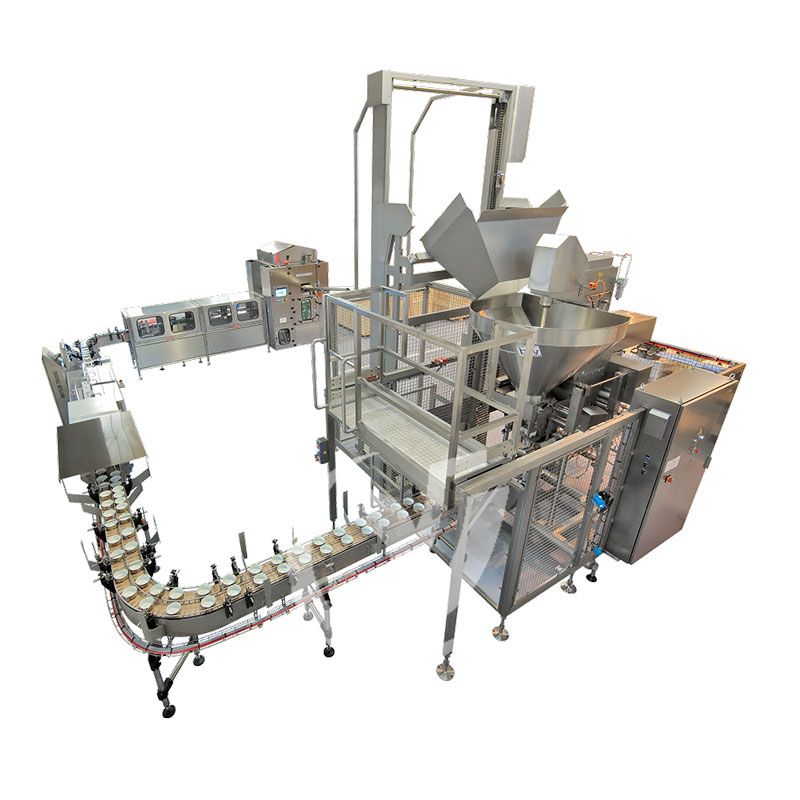


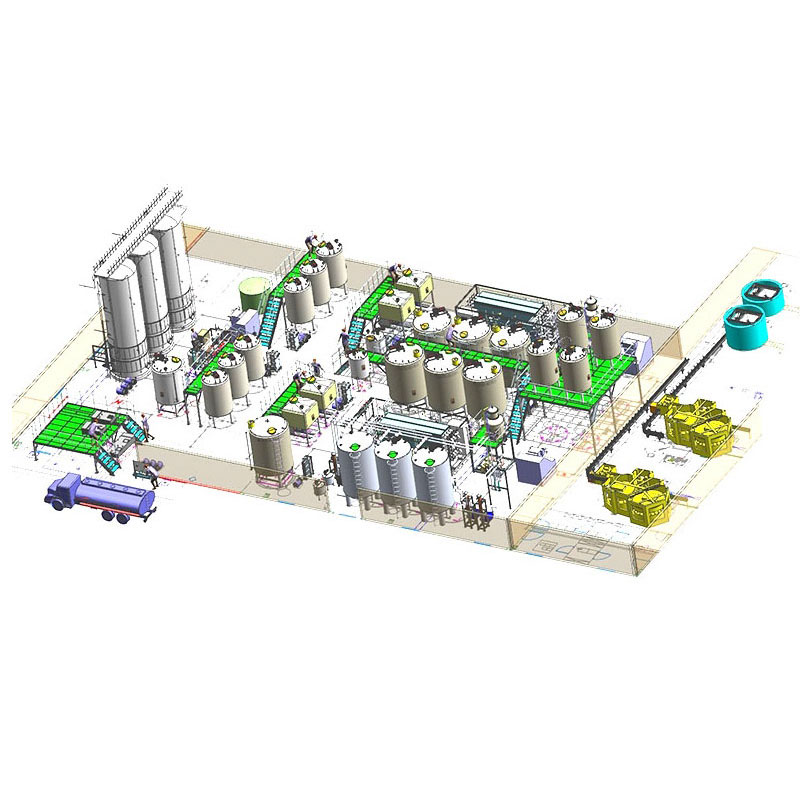


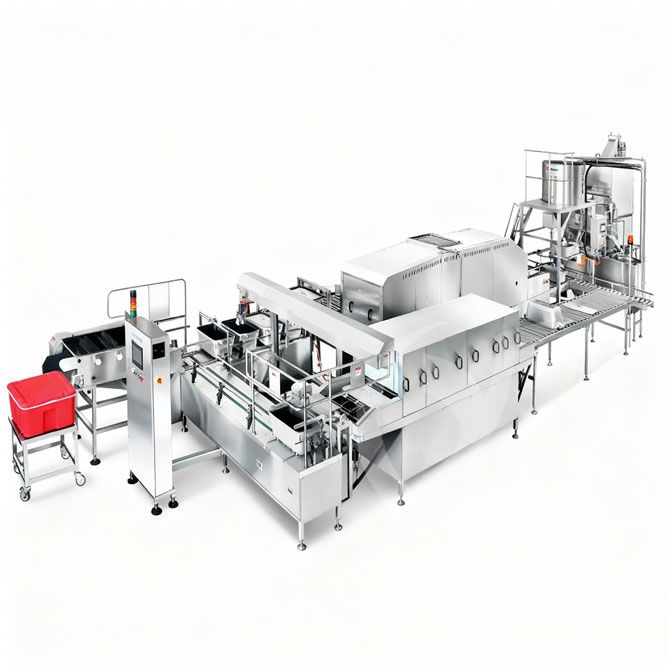
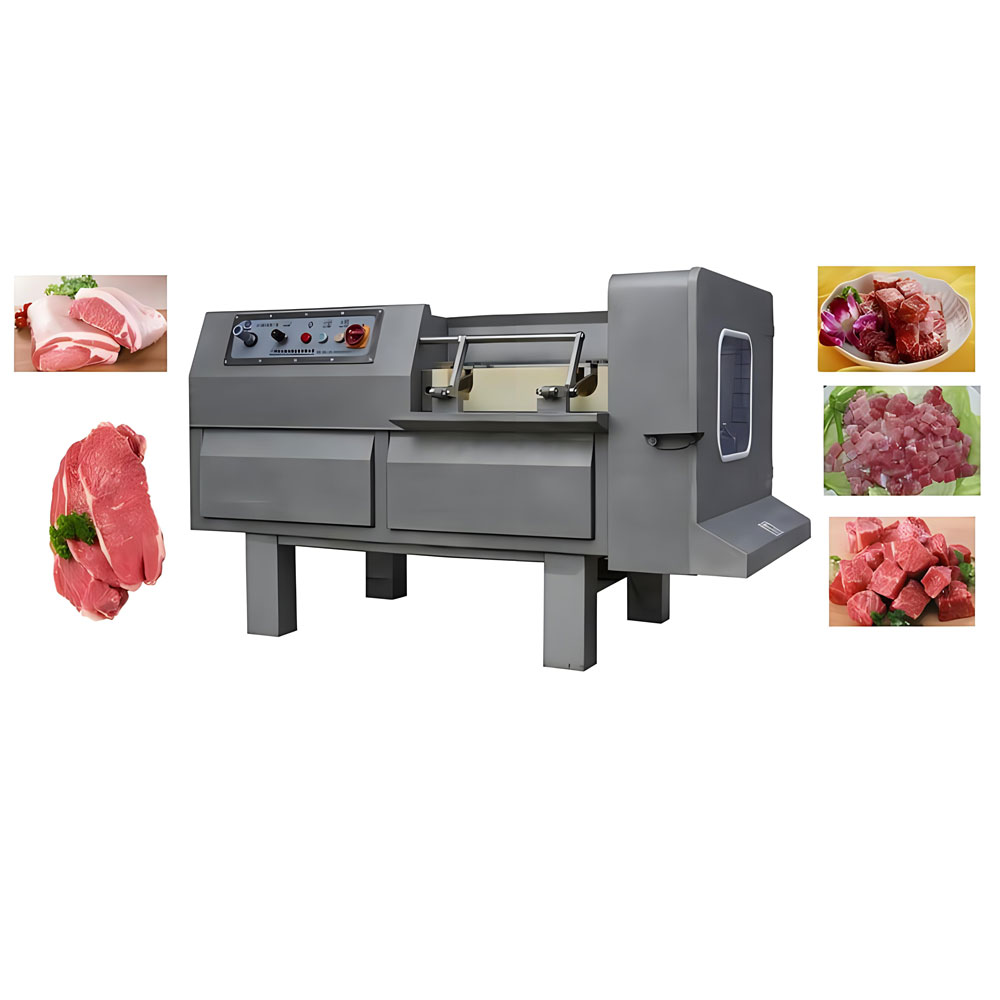 Automatic Fresh Meat Dicing Machine
Automatic Fresh Meat Dicing Machine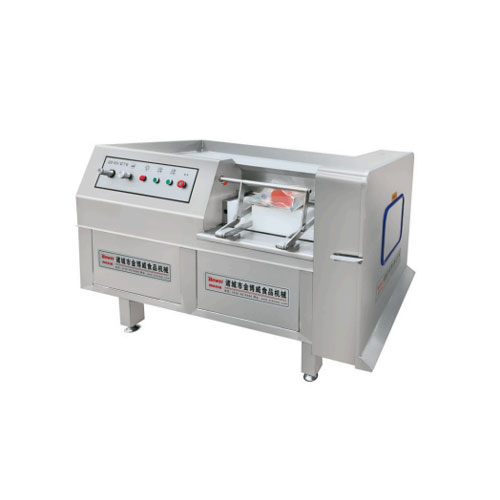 Meat Dicing Machine
Meat Dicing Machine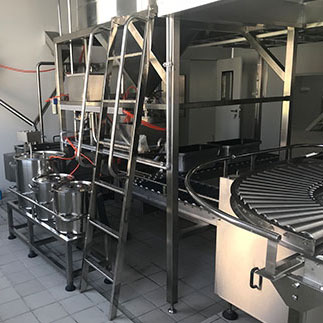 Cold Chain Rice Production Line
Cold Chain Rice Production Line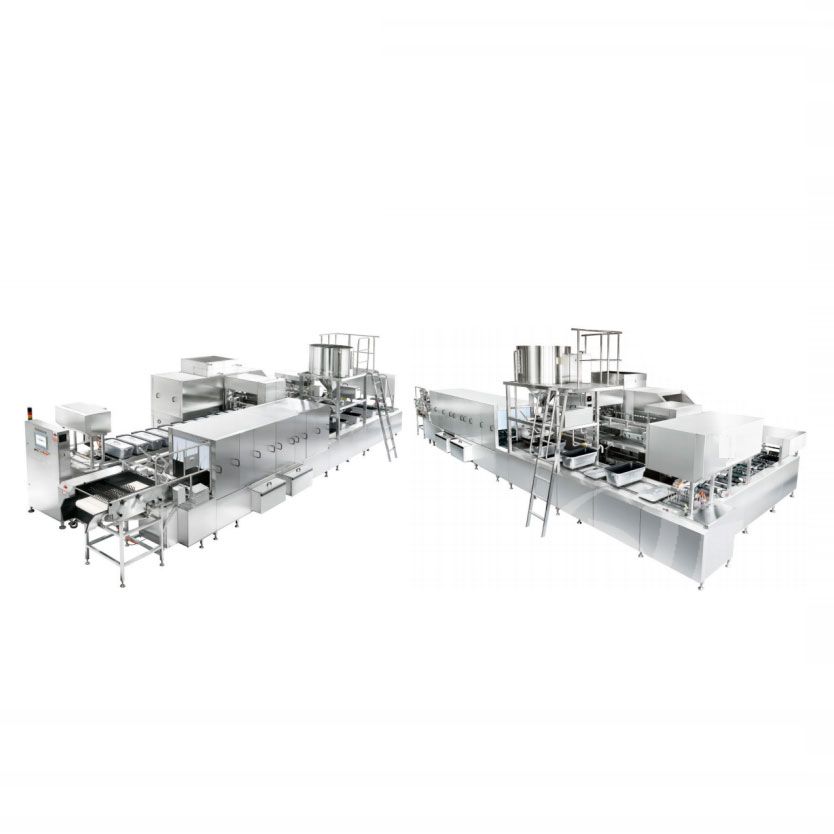 Unmanned Intelligent Rice Production Line
Unmanned Intelligent Rice Production Line
Ready to Get Started?